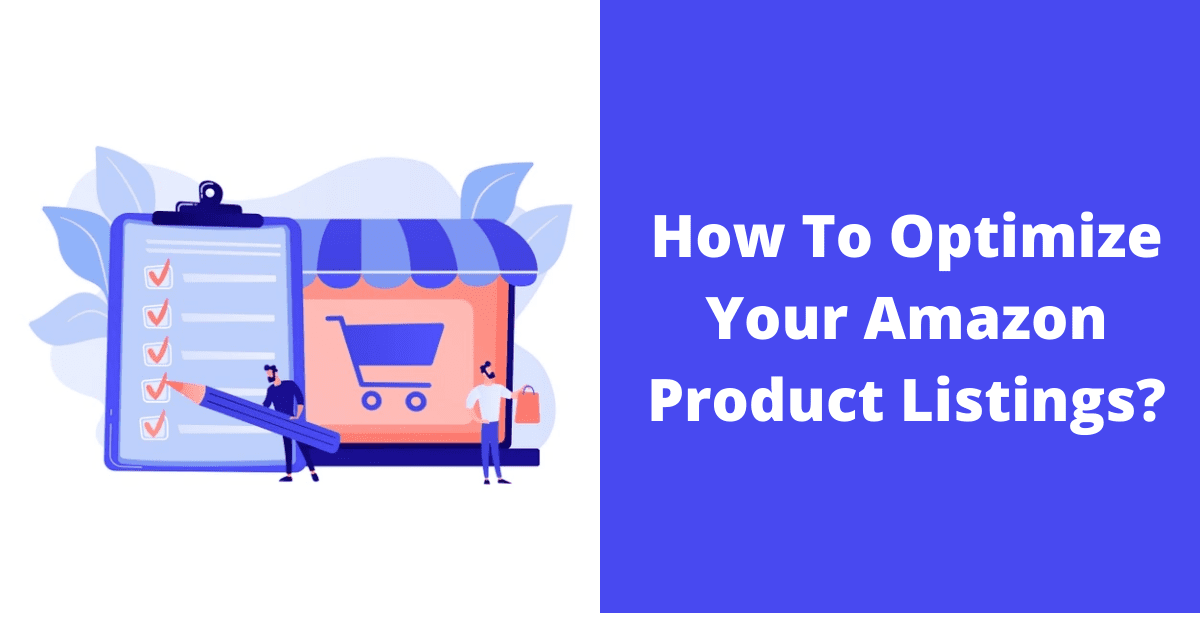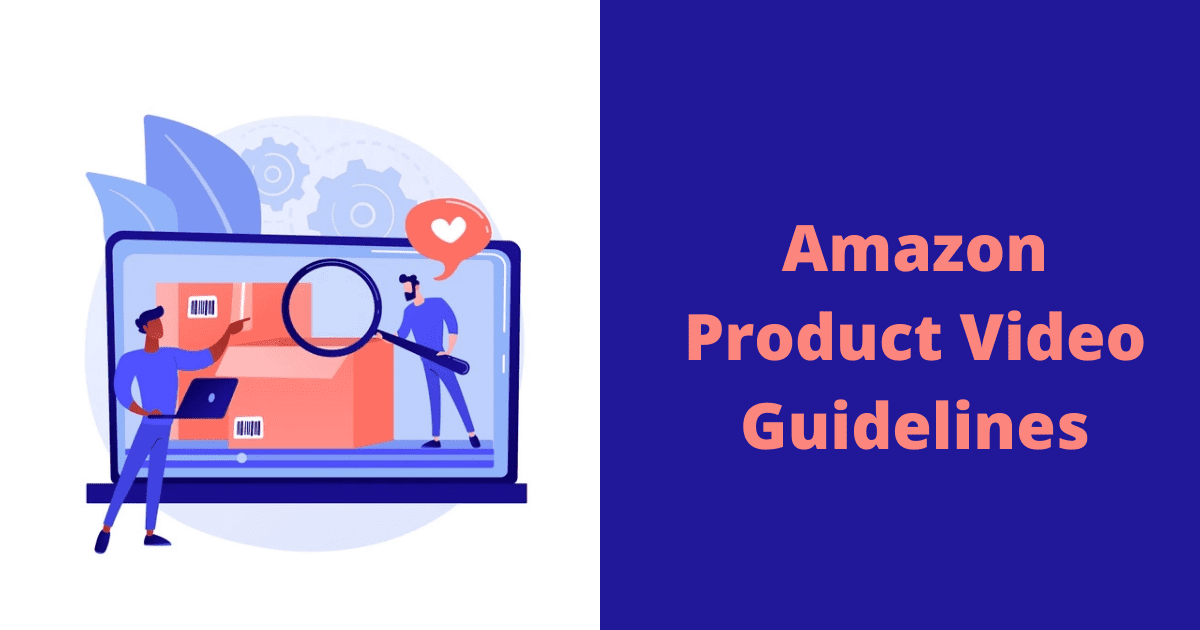Gain understanding on optimizing your Amazon product listings so you can stand out among your competitors.
If you’re an Amazon seller, you’ll almost certainly need to develop an optimized Amazon product listing at some point. This might be for a private label item, a new retail arbitrage item, or a one-of-a-kind package. Increase sales and enhance your product rating by creating product listings that are both informative and convincing.
If you shop on Amazon frequently, you’ve probably seen examples of terrible product listings from which you can learn. Keyword-stuffed names, perplexing imagery, and inadequate product descriptions are all common product listing blunders.
Have you ever wondered why some products consistently appear in Amazon searches while others receive little or no attention? Alternatively, why do some Amazon product listings continue to receive clicks and have a high sales rate while others do not?
The secret workings of Amazon’s complicated ranking system often leave sellers scratching their heads as to what will result in higher exposure on the site – yet there are some definite characteristics from which one can draw performance trends.
CONTENTS
To easily navigate through the topics, use the links below.
- What is an Amazon product listing?
- A9 Algorithm
- How to Optimize Your Product Listing
- How to List a New Product On Demand
- Amazon Product Video Guidelines
- Impact of Customer Decision Journey on Product Listing Optimization
What is an Amazon Product Listing?
Customers can learn everything they need to know about a product from an Amazon product listing or the product page. It includes product photographs and videos, product information, and customer feedback from individuals who have previously purchased the item.
The process of tweaking your Amazon product listings in order to boost traffic and conversion is known as Amazon product listing optimization. It is one of the most important strategies for keeping your goods at the top. To be successful, you must work hard in this area and ensure that the product title, description, reviews, advertising plan, visibility through keywords, and all other aspects are taken into account.
Why is the Amazon product listing important?
Optimizing your Amazon product listings is essential for giving online buyers a tailored and memorable experience. Amazon sells over 353 million different items, resulting in near-endless competition in the Amazon marketplace. Even if you have a high-quality product to sell, you won’t be able to sell it if clients can’t locate it among a sea of competitors. By optimizing these listings, shoppers will be able to search for and find those products with ease!
While enhancing visibility on Amazon’s search engine results page, optimizing your Amazon product listing maintains uniformity across branding, messaging, reviews, and ratings.
Introduction to Amazon’s A9 Algorithm
The A9 search engine algorithm was created by Amazon to fuel their product searches. It’s been around for nearly two years and has grown in complexity as time has passed. Amazon’s search engine advertising technology is developed by A9.com, an Amazon subsidiary. However, it is no longer a viable brand.
The Amazon A9 algorithm is an important factor for sellers to consider when trying to climb the Amazon rankings. It’s a search methodology that swiftly examines and analyzes all of the data on the market to present you with some of the greatest product options available. This AI-powered system places products that are related to a customer’s inquiry at the top of the results page. Relevance is one of the principles it follows: in order to rank higher, businesses must optimize their listings for SEO and ensure that they are relevant when customers search.
The Amazon ranking algorithm adapts to its customers’ search patterns, displaying the items that they are most interested in. They may mix different relevant elements and offer search results tailored precisely for individual buyers thanks to the structured data in their inventory. The technology also learns from previous search trends and adapts to show clients the most relevant results.
Stand out: 5 Reasons Branding is More Important Than Ever on Amazon
Factors that determine A9 Algorithm
1. Parent-Child Products
The built-in parent/child product capability on Amazon is a terrific method to show variations of the same product without having to create separate listings. This means that your buyer will be able to find all of your products on a single page. Color/name, size/count, and aroma are just a few of the variations! For example, identical t-shirts that differ only in hue; lipstick in a variety of tints; and so on. Products with several alternatives in their listing tend to rank higher on Amazon’s ranking system than those without.
Another advantage of doing so is that you’ll have a better chance of ranking for product searches because you’ll have more selections to choose from. Customers are more likely to make a buy if they stay in the same spot and look at all of the other things at the same time!
2. Text-Match Relevance
The content of a product listing is shaped by relevance. It’s basically a built-in ranking system that considers keywords, descriptions, and even bullet points when determining how “relevant” your things are for a certain search term or keyword. The relevance of the material is a significant ranking element. The better the match, the higher up the list they’ll appear! To get your listing to rank well, use creative names and keyword-rich descriptions, but make sure they’re also interesting.
3. Sales Velocity
This is yet another important factor that the A9 algorithm takes into account when establishing product rankings. To keep the marketplace competitive, it compares and rates the seller’s transactions and money amounts against those of their competitors. The seller who has the fastest sales velocity is the winner.
Amazon calculates both dollar volume (the amount) and transaction quantity (the number of items) (number). Both are crucial elements that are taken into account when determining who receives high ranks on their website.
4. Stock Availability
Have you ever been puzzled why your Amazon product listings vanish from the top of the search results? Well, whether or not an item is in stock is factored into the algorithm that ranks your listing. If a product isn’t available, it’s likely that your rating will suffer and customers won’t be able to find it. Running out of stock, on the other hand, has a negative influence on the health of your Amazon account.
Low inventory has a negative impact on your seller performance rating, which leads to lower sales volume–so don’t put off restocking those shelves any longer!
5. Pricing
A9 is a difficult algorithm to master. It not only displays the best-selling and most relevant products but also determines whether a product is priced correctly. It considers the best pricing and how well your Amazon product listing is shown. So, strive to strike a balance between these factors.
6. FBA
One of the most valuable resources for merchants is FBA (Fulfillment by Amazon). Amazon’s fulfillment-by-Amazon program allows merchants who use their services to stock their products at any or all of Amazon’s warehouses in the area. This has two advantages, one is a Featured Merchant status that boosts your visibility on the Search Page, and the second increases chances of winning the Buy Box. As FBA has numerous advantages, this enhances your sales velocity and improves conversion rates. Easy return policies, quicker delivery dates, accountability, and so on are a few of them.
7. Advertising
Another important component that Amazon’s A9 search algorithm considers is sales velocity. However, how do you boost your sales velocity? The answer, of course, is “advertising.” Even a few dollars spent on advertising can drive a lot of traffic to your product listings. And if the product is good enough, you’ll be able to sell more.
8. Customer Reviews
Reviews, without a doubt, play an important influence in increasing overall sales. Customers’ favorable ratings and reviews aid the A9 algorithm in determining if consumers are engaging positively or negatively. Create an outstanding customer experience for visitors browsing through your listings to exceed your competitors with this aspect of your marketing plan. Answer their questions in the Q&A section of your product listings to keep them interested. Attempt to obtain positive and positive feedback while minimizing and neutralizing bad input.
9. High-Resolution Images
In an online marketplace where purchasers cannot directly interact with the product, images are everything. Bright, crisp, high-quality product images boost conversion rates and appeal to Amazon’s A9 algorithm, which means your listing will appear higher on search results pages. Upload as many suitable photographs as possible, from different angles, to placate the A9 algorithm, as well as shoppers, by providing them with a variety of views before they buy.
The longest side should have at least 1280 pixels, according to Amazon. You should aim for ultra-HD photos with a long side resolution of 2560 pixels (or more). You can also experiment with photographs that have been rendered in 3D. These photographs appeal to your visitors in a genuine way.
10. Promotions
There are various techniques to increase conversions and sales velocity, but promotions can deliver an immediate jump in revenue. It is not, however, a long-term approach. Discounting your goods may result in an instant increase in sales and conversions, but you should be cautious when doing so because discounts frequently have a detrimental impact on rankings. There are several more “A9” criteria to consider, such as the appropriateness of your text match and the availability of your goods.
11. Amazon A+ Content
According to Amazon, A+ content increases overall product sales by 3–10 percent on average. The increase is due to the fact that as customers learn more about a product, they are more satisfied with it.
There are six aspects to consider while creating an Amazon product listing. These characteristics are vital to grasp as a third-party vendor, whether it’s a private label or retail arbitrage:
- Product Image
- Product Title
- Product Description
- Product Features
- Product Ratings
- Product Reviews
12. Brand and Manufacturer
When listing on Amazon, there are numerous advantages to incorporating the brand name. Customers will search for your goods by specific brands and manufacturers in addition to filtering results to get what they’re looking for much faster than if you didn’t provide it.
Amazon does not display products without a manufacturer or brand name. As a result, incorporate a reference of your brand or manufacturer for the ultimate success of your goods. This will help you get in Amazon’s spotlight, and shoppers shopping for comparable products will be able to find you simply!
Follow the standards for every aspect of your product listings, then optimize and improve them to increase conversions. This allows you to outrank your competition, provide more value to your customers, and expand your consumer base.
13. Category
If your listing is overly broad, a consumer looking for a product in the same category may not find you. When entering product details, make sure to place them in the most specific category possible so that they can easily find your product listings.
Maximize listings: How to Optimize Your Listing Without Spending Ad Dollars
How To Optimize Your Amazon Product Listings?

You may enhance sales and add to the bottom line by ranking higher in Amazon search results. But how do we achieve such a high ranking? Many elements go into creating a successful product listing, including keyword optimization, having high-quality photos with adequate lighting, writing an optimized title and description, and more! Let’s go over some of these key points in further depth so you have all of the skills you need to succeed on this platform.
8 Improvements To Optimize Your Amazon Product Listings
1. Product title
Amazon allows a product title length of 250 characters in most product categories. Interestingly, most sellers limit their descriptions to less than 200 characters. While Amazon states you can use up to 250 characters in your title, there is still a suppression rule in effect that prevents listings with titles longer than 200 characters from being displayed.
The buyer should be able to decide whether or not to proceed based on the information provided in the title. Include the most important information – the information you’d look for if you were looking for your merchandise. Think about the brand, model, size, quantity, and colors, to name a few.
2. Product images
You will be allowed nine product photos, including a lead image, on Amazon. Include as many high-resolution photographs as you can, with a width of 1,000 pixels and a height of 500 pixels.
For the majority of products, white background for the main image is recommended. Demonstrate your product from various angles, in use, and in the remaining photographs, include a photo of the product package. The goods should fill at least 85 percent of the image, according to Amazon.
Generally, you should definitely include more than one photo and photos that explain your product that is at least 1000 by 500 pixels in size.
3. Key product features
On Amazon, you get 1,000 characters to define your product’s major features. It can be used to persuade potential buyers that your product is superior to the competition by describing its features and benefits.
Put yourself in the customer’s shoes and help them visualize the experience of using your product as well as the benefits it offers. How can you make your product more user-friendly? By assisting customers in conjuring visions of themselves using the products you promote. This could include providing real-life examples or lifestyle applications, as well as demonstrating how your solution solves their difficulties.
4. Product description
The product description is your chance to show why your product is better than others in its category.
To describe your product and what it accomplishes to potential customers, Amazon gives you 2,000 characters. And, as always, make the most of your 2,000 characters by expanding on any of the attributes you highlighted in the preceding section.
Use short words and emboldening to underline any vital information to make it easier for potential customers to read. In this part, you can include any relevant information about the product or company. You don’t want to mislead the buyer or set expectations that your goods can’t meet, so don’t go overboard here.
5. Keywords
It’s helpful for sellers to know what keywords they’re targeting and ranking for in order to optimize their product listings.
A common Amazon seller error is to utilize the wrong keywords in a product listing. Only employ keywords that are relevant to your content. You can use keywords in your title and/or product attributes. Keywords should be included in relevant areas on your Amazon product listing, such as the title and product attributes.
6. Search terms fields
You’ll want to incorporate your favorite keywords in your title and bullet points once you’ve compiled your list. Whatever is left behind will be entered into the Search Terms sections on the backend.
Keywords in the standard Search Terms box are limited to 250 bytes. These should be terms that you haven’t used in your copy before. For letters and numerals, a byte equals one character; for symbols and special characters, a byte equals two characters.
All keywords in your Search Terms field will be ignored if it exceeds 250 bytes. In the Intended Use, Target Audience, and Subject Matter boxes, you can also enter less significant keywords. These terms must be unique to each name.
7. Product Reviews
On Amazon, product reviews are extremely essential. They serve as social proof for the high quality of your product. Product reviews, on the other hand, are harder to come by, particularly for new vendors and products.
8. Product rating
The greatest strategy to get 4 or 5-star ratings are to provide a high-quality product that you precisely represented. If you receive any negative or neutral reviews, double-check that they adhere to Amazon’s guidelines.
Reduce inventory challenges: Here’s How to Prepare for a COVID19 Fall
How To List A New Product On Amazon?
Step 1: Go to the dashboard after logging into your seller central account.
Step 2: Select “Inventory” from the main menu.
Step 3: A drop-down menu appears. From the drop-down menu, select “Add a Product.”
Step 4: You’ll be taken to a detailed page where you may add the item to your cart.

Step 5: You now have the option of selecting an existing item or creating your own. You can either browse Amazon’s catalog or add a new product that isn’t sold there.
Step 6: To classify the item you offer, choose a product category and subcategories. If you believe your goods can be included in two categories, have a look at the other vendors’ listings to see which category they are in.

Step 7: After you’ve chosen the right product category, you’ll be able to fill out the information for the product listing.
Step 8: You’ll be prompted to fill out the product title, description, and photos, among other things. This is the portion of your listing that can make or break it. The information you provide should be both entertaining and informative. Most essential, it should persuade potential customers to buy your product.
Step 9: Fill in the blanks on each tab, such as Variations, Offer, Images, Description, Keywords, and so on. If you see a red warning icon on any of these tabs, it means you forgot to fill in the necessary information to publish the listing on Amazon Marketplace. Your listing will not be published unless you complete this step.
Amazon Product Video Guidelines

When a product comes with a video, Amazon customers are ecstatic. According to a recent poll, 90% of them think product videos help them make a decision, and listings with videos have greater conversion rates since they allow consumers to see how effectively your product performs.
Including videos in your product listing are a smart move and one of the most effective ways to persuade customers to buy anything from your store or website, depending on how much time they spend searching for it online before making a decision. Now, if you’re a seller and want to include a product video in your offering with the photographs, it’s straightforward. But first, learn about the many types of videos and what each one adds to them.
You can make a variety of product videos
Product Highlighter Video: This is a basic, tidy video that focuses only on the product. They usually consist of a 360° movie showcasing the goods on a white background.
Customer Experience Video: Reviewers, admirers, or customers are usually the ones who record this type of video. It provides a realistic experience for other purchasers to better understand the goods.
Product Explanatory Video: This style of video is high-quality and has an engaging screenplay that discusses the advantages of utilizing the product.
Amazon’s Instructions for Adding a Product Video
Before you publish a video, keep the following points in mind:
- Make sure you own the copyrights to the product video you’re about to share.
- A high-resolution video of a product should be produced.
- The product video should be in a 16:9 aspect ratio or in its typical YouTube orientation.
- A minimum resolution of 1280 720 pixels is required for the product video, while 1920 1080 pixels is preferred.
- An RGB (Red-Green-Blue) color profile with 300 DPI should be used to film the product video. 72, on the other hand, may be acceptable.
- Multiple brand logos are not permitted in the product video. There can only be one.
- The video should be in one of the following file types: MP4, MOV, FLV, AAC, AVI, 3GP, and MPEG-2 are some of the most popular video formats. You must convert it before submitting it, even if it was made in Apple ProRes.
- The video’s thumbnail picture should be in either PNG or JPEG format.
- The thumbnail image for the video should be of good quality.
- Your contact information cannot be used in the product video.
- Details about the distributor, company, or vendor cannot be included in the product video.
- Your product video cannot include products from your competitors.
- The product video cannot include your position as an authorized seller or the fact that it is only sold by authorized resellers.
- The price of the product cannot be shown in the product video.
- The product video must not include any promotional information (e.g. on sale, hot selling, affordable, etc.).
- Time-sensitive information cannot be included in the product video.
- The timeframe and shipping costs cannot be included in the product video.
- There must be nothing in the product video that suggests it could be utilized for criminal behavior.
- Customer reviews are not permitted to be used in the product video.
- Third-party or editorial quotes are not permitted in the product video.
- The guarantee or warranty information cannot be included in the product video.
- You can’t use brand logos that you don’t own in your product video.
- Any links to websites other than Amazon are prohibited in the product video.
- Perverse or offensive content is not permitted in the product video.
How To Add A Product Video On Amazon?
Step 1: Go to Amazon Seller Central and log in.
Step 2: Select A+ content manager from the Advertising menu.
Step 3: Look up the SKU for your product (Stock Keeping Unit).
Step 4: To add the video to the appropriate ASIN, click the “Get started” button.
Step 5: Save the video clip to your computer.
Step 6: Add the product video’s image, title, and description.
Step 7: If the video you’ve uploaded contains content that isn’t acceptable for children under the age of 18, check the box labeled “adult audience.”
Step 8: You’ve completed the process of adding a product video.
Guard your business: Protect Your Account Against Black Hat Vendors
Impact of Customer Decision Journey on Product Listing Optimization
The consumer decision journey is a process in which customers determine which product to buy for themselves or others depending on their requirements and desires. In order to be successful, sellers must improve four key elements: availability, findability, conversion rate optimization (CRO), and post-purchase experience.
1. Availability
When it comes to optimizing your Amazon listings, the first element to consider is availability. There are two things to examine when selecting what factors are important: inventory availability and Buy Box ownership. You could have the best keywords or product photos, but if your product listing is suppressed due to little or no inventory stocks, nothing will help you rank high.
Owning the ‘Buy Box’ is one of the finest methods to reduce client returns and discontent. When you own it, your business provides a product listing that shoppers are more likely to view than listings published by other sellers while browsing on Amazon.
2. Findability
Although Amazon is a capricious beast, there are techniques to make your products more discoverable. Making sure everything is in stock and you’ve won the Buy Box is the first step in improving your Amazon listing. After you’ve taken care of these, the following step is to concentrate on “findability.”
Your discoverability is one of the most essential aspects in Amazon’s ranking system. Findability involves both organic and paid presence, which means that you should not only ensure that your products rank for keywords relevant to your category, but also that customers can quickly navigate your products.
This implies you must assess the most commonly searched terms that are related to your product listing and include them in the title, description, and characteristics of your product. It’s also crucial to incorporate them in backend keywords and image alternate text.
3. Conversion
“Users do scroll, but only if what’s above the fold is compelling enough,” which implies that your above-the-fold content, which includes your title and picture list, is one of the most important factors that can help you construct a conversion funnel. Use the best keywords in the headline of your product listing and include high-resolution photographs.
You have more creative freedom and can delve deeper into your offering below the fold. If customers are 90% sold on a purchase based on what they see above, buyers will find more videos of their products in action, A+ content, and reviews from other customers who have purchased them before under the below-the-fold content.
4. Post-Purchase
Conversion is only one part of optimizing your Amazon listings. The importance of customer satisfaction in product listing optimization cannot be overstated. You want them to have a positive experience with the product as well as with the seller’s storefront, as evidenced by product reviews.
Repeat customers, or customer retention, are a good indicator of a well-developed post-purchase procedure. Not only does this demonstrate customer pleasure on the product side, but it also demonstrates customer satisfaction on your seller storefront by providing prompt and professional solutions to all concerns or complaints.
Conclusion
There’s a reason Amazon is the world’s largest online store. People use it three times as often as Google to look for products all over the world! It’s critical that this website has precise algorithms so that the best results are displayed after each search. To stand out among the millions of competitors, improving your product listing to match the A9 algorithms is critical.
The way you present your goods on Amazon may make or break a sale, both in terms of listing content and the user experience following a purchase. For a product listing to rank first on Amazon searches, it must have appealing listing pages that include all of the information shoppers require to feel confident in their purchases.



